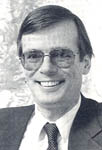
Thirty years ago heresy was not a fit topic for polite or ecumenical conversation. But since the 1971 English translation of Walter Bauer’s Orthodoxy and Heresy in Earliest Christianity (Fortress Press; originally published in German in 1934), the study of heresy has made a comeback and even achieved political correctness in the ’90s. A number of collections has made the subject of heresy available for easy reading and study.1
Ironically, heresy depends on orthodoxy for its existence. Usually a powerful majority affirms its own authoritative truth by declaring the views and practices of a dissenting minority deviant. Once upon a time heretics were the “bad guys” of the Christian tradition (and, to a lesser extent, of the Jewish tradition, which has a less centralized administration). Modern historians, however, assess heretics with dispassion and detachment. Religious communities always have groups within them that espouse outlooks and behaviors that deviate from the majority view. Even more strikingly, societies switch the labels “orthodox” and “heretic” as compromises reunite groups, shifts in power marginalize once dominant authorities and intellectual trends redefine contentious points of practice and thought. In the end, orthodoxy and heresy depend on one another for their form, boundaries and vigor.
Modern Western societies view charges of heresy with indifference, discomfort or disdain. Freedom of thought forbids coercion of conscience. Science examines hypotheses, not competing authoritative faith claims. Historical criticism values all views and events equally as part of the flow of human thought and action. Western religious institutions receive no popular support for charges of heresy and seldom bring them. Nonetheless, conflicts abound within and among churches. Controversial committee reports, disputed rules and debated disciplinary actions split congregations and conferences. Orthodoxy and heresy may be out, but arguments over truth in word and deed continue under other names.
What is at stake when religious groups and factions argue with one another? Why do Christians label each other orthodox and heretic? Why does strife over practice and thought break out regularly in Judaism, Christianity, Islam and other religions? Some of the reasons are perennial. Human knowing is always imperfect and mutable, no matter how much we claim to have the simple, absolute unchanging truth; and imperfect knowledge inevitably spawns disagreement. Permanent tensions in a tradition produce recurrent conflicts. For example, Christians have claimed that Jesus is both God and human for centuries and have argued for that long over how to formulate such a claim and interpret its meaning. In the contemporary West sharp debates continually break out between religious traditions and quickly changing culture. Modern science stresses progress and the inherent uncertainty of provisional scientific results, much to the dismay of religious traditions, which seek to maintain the stability of their revelation and traditions.
One hopes that each side in an argument over an important aspect of human life has something to contribute to common understanding and to solving critical problems. If I judge that someone is mistaken, propose an alternative way of thinking and acting, and give my reasons, I have contributed to discussion and argument in search of the truth. But existential questions of life and death force decisions and choices upon us, and the resulting disagreements shatter peaceful dialogue. Religious questions that address ultimate questions and their consequences arouse our deepest passions and fears, not least because reliable answers often elude us. Fear and passion in turn provoke intense disputes in which all sides damn and sometimes kill one another.
Ironically, heresy and conflict can be healthy for a tradition. Settled ways of thinking and acting are often sloppy or unresponsive to human needs and cultural change. Disputes often mark areas for productive growth. New views force both conventional and daring members of a community to define sharply who they are and what they stand for. The very struggle to think through the complexities of infinity and ultimacy reminds religious communities of inherent human inadequacy in the face of profound religious truth.
Orthodoxy and heresy, or their modern equivalents—conservatism and liberalism, or traditional values and political correctness—are here to stay. Our task is to make good use of them. If we fairly assess all views and ways of life, we see both orthodoxy and heresy as part of the human and historical context in which the biblical God lives and works.
MLA Citation
Endnotes
These include Arland J. Hultgren and Steven A. Haggmark, eds., The Earliest Christian Heretics: Readings from Their Opponents (Minneapolis: Fortress, 1996); Everett Ferguson, ed., Orthodoxy, Heresy and Schism in Early Christianity (New York: Garland, 1993); and Charles S. Clifton, Encyclopedia of Heresies and Heretics (Santa Barbara, CA: ABC-CLIO, 1992). The inevitability of heresy is traced in Maurice F. Wiles (Archetypal Heresy: Arianism Through the Centuries [Oxford/New York: Clarendon, 1996]); Robert M. Grant (Heresy and Criticism: The Search for Authenticity in Early Christian Literature [Louisville, KY: Westminster John Knox, 1993]); and Malcolm Greenshields and Thomas Robinson, eds. (Orthodoxy and Heresy in Religious Movements: Discipline and Dissent [Lewiston: Mellen, 1992]). Hultgren (The Rise of Normative Christianity [Minneapolis: Fortress, 1994]) and C. FitzSimons Allison (The Cruelty of Heresy: An Affirmation of Christian Orthodoxy [London: SPCK, 1994]) affirm the normativity of traditional Christian teaching, while Gerd Lüdemann (Heretics: The Other Side of Christianity [Louisville, KY: Westminster John Knox, 1996]) and Alastair H.B. Logan (Gnostic Truth and Christian Heresy: A Study in the History of Gnosticism [Peabody, MA: Hendrickson, 1996]) take the side of those who lost out in the struggle with orthodoxy.

